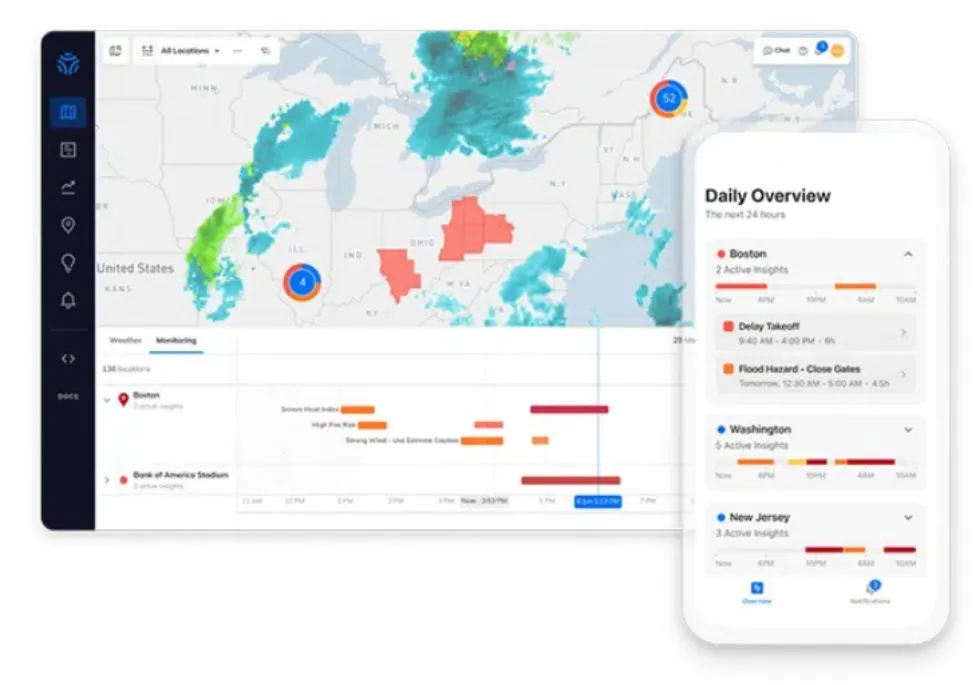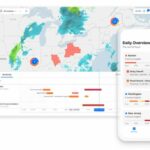In today’s rapidly digitizing world, it’s crucial to utilize the power of data to tackle emerging challenges. Among the myriad of data sources at our disposal, weather APIs stand out for their potential to generate actionable insights for multiple socio-economic applications. This article aims to present five innovative project ideas that leverage advanced weather APIs and discusses the tech stack required to kickstart these initiatives.
Ideas to Weather the Storms Ahead
- Precision agriculture: Modern agriculture thrives on accurate, real-time data. By leveraging advanced weather data, we can provide precise farming recommendations, from optimal planting and irrigation times to effective pest control. The result? Increased crop yields, resource optimization, and a step towards global food security.

- Disease Outbreak Prediction: Weather patterns significantly influence disease prevalence and spread, particularly for vector-borne and seasonal diseases. Advanced weather data can inform AI-driven predictive models, enabling proactive disease control measures and efficient healthcare resource allocation.
- Smart Energy Grids: As we shift towards renewable energy sources, weather data becomes invaluable. With AI and advanced weather insights, we can optimize energy distribution, effectively harnessing intermittent sources like wind and solar power, and facilitating a sustainable energy transition.
- Disaster Mitigation Planning: By deploying AI models trained on detailed weather data, we can improve the prediction accuracy of natural disasters, such as floods, wildfires, or hurricanes. These insights can boost disaster preparedness and response, potentially saving lives and reducing property damage.
- Climate Change Modeling and Policy Support: Long-term weather patterns offer crucial insights into climate change dynamics. Detailed models derived from this data can guide policymakers in creating effective strategies to combat adverse climate change effects.
Building the Right Tech Stack
To translate these ideas into reality, you’ll need a robust tech stack that includes first and foremost a weather api:
For precise, comprehensive weather data, we will use Tomorrow.io’s API. It blends sensor data, satellite imagery, and radar data to provide accurate, localized weather forecasts in real-time and historically. Its user-friendly interface and detailed documentation make it ideal for data scientists at all levels. Whether your project involves precision agriculture or disease prediction, Tomorrow.io provides the essential weather data for success.

Additional tools in your techstack should include;
- Programming Languages: Python and R serve as the backbone, with SQL for database interactions.
- Data Manipulation and Analysis Tools: Libraries like pandas, NumPy (Python), and dplyr, tidyr (R) provide robust data manipulation capabilities.
- Machine Learning Libraries: scikit-learn, TensorFlow, and Keras (Python), and Caret, TidyModels (R) enable versatile model building.
- Cloud Services: AWS, Google Cloud, and Microsoft Azure provide extensive resources for data storage and compute power.
- Data Visualization Tools: Libraries such as matplotlib and seaborn (Python) and ggplot2 (R) offer excellent data visualization options.
- Data Storage and Management: PostgreSQL/MySQL for relational databases and Apache Hadoop/Spark for big data processing.
- Version Control System: Git serves as a version control system with GitHub/GitLab for repository hosting.
Getting Started: A Step-by-Step Guide
Now, let’s dive into the steps to kickstart your data science journey:
- Define the Problem: Clear problem statements lead to effective solutions. Understand your goals and objectives thoroughly.
- Acquire the Data: Dive into the API documentation, understand how to make requests, and start gathering your data.
- Set Up Your Environment: Get your programming environment ready, install the required libraries and tools, and set up a cloud service provider if needed.
- Explore and Clean the Data: Get to know your data. This involves cleaning and preprocessing to make it suitable for further analysis.
- Develop a Model: Choose the right machine learning models for your problem. This will likely involve some experimentation and tuning.
- Train and Test the Model: Using your training data, train your model, then test it on the test data to evaluate its performance.
- Evaluate and Refine the Model: Use appropriate metrics to assess your model’s performance. Refine and optimize based on your findings.
- Implement and Monitor the Model: Deploy your model and continuously monitor its performance.
- Document and Share Your Findings: Maintain clear documentation throughout your project for future references and improvements.
Remember, data science is an iterative process. Expect to return to earlier steps as you progress, refining your approach based on what the data tells you.
By capitalizing on the untapped potential of advanced weather APIs, data scientists and engineers have the power to create cutting-edge solutions to some of the world’s most pressing problems. So, why wait? Let’s build a better tomorrow, one data point at a time.

Are You Ready to Unleash the Power of Weather Data?
The convergence of data science and weather forecasting holds untold potential. From improving agricultural yield to predicting disease outbreaks, smart energy management, and more – the possibilities are as vast as they are promising. If you’ve found your inspiration in any of the projects mentioned above, then now is the time to take the first step and put theory into action.
If you’re new to data science or want to sharpen your existing skills, our Data Science Courses are just the ticket. We offer a comprehensive curriculum tailored to your experience level, equipping you with the practical know-how to leverage weather APIs for transformative solutions. Learn the ins and outs of Python, R, machine learning libraries, cloud services, data visualization tools, and more – all under the expert guidance of our seasoned instructors.
But if you’re looking for ready-to-implement solutions or specialized services, we’ve got you covered too. Our AI and Data Science Services team are seasoned pros in harnessing weather data for diverse applications. From creating machine learning models for disease outbreak prediction to implementing AI-powered disaster mitigation plans, our experts can turn your ideas into a reality.
The future is in the making, and you have the power to shape it. Let’s harness the predictive power of weather data to tackle the pressing challenges of our time. With our data science courses and AI and data science services at your disposal, you’re already one step closer to building a better tomorrow.
Don’t wait for the future – create it! Enroll in our Data Science Courses or Contact us for AI and Data Science Services today!
- What is the F-1 measure and why is it useful for imbalanced class problems?
- From Data Streams to Decentralized Worlds: Exploring the Role of Blockchain Subgraphs in Gaming Infrastructure
- How to predict customer churn using machine learning, data science and survival analysis
- Business models in data science and AI

